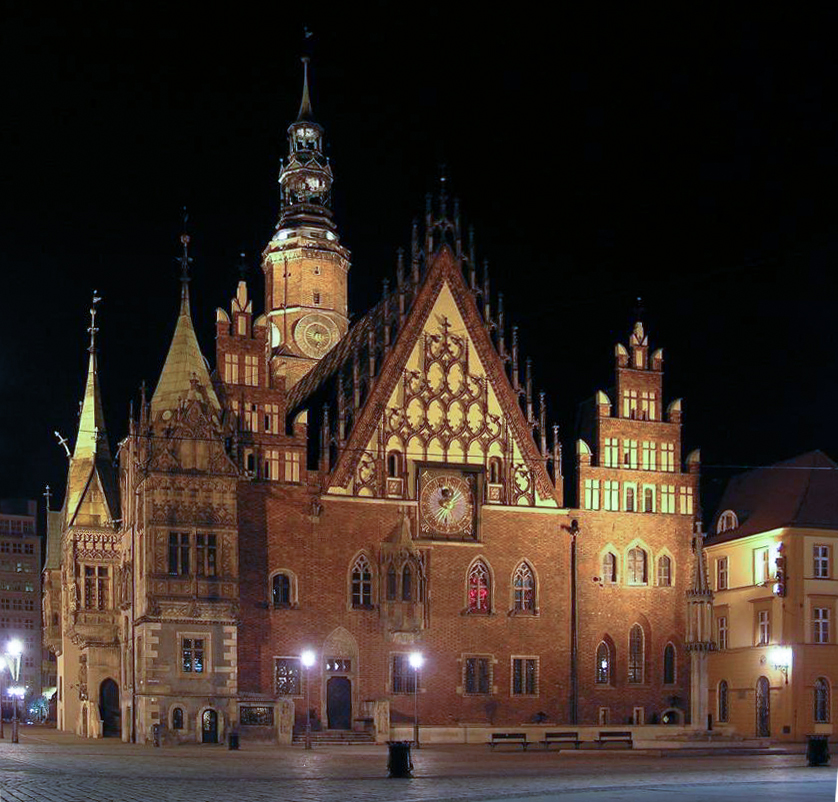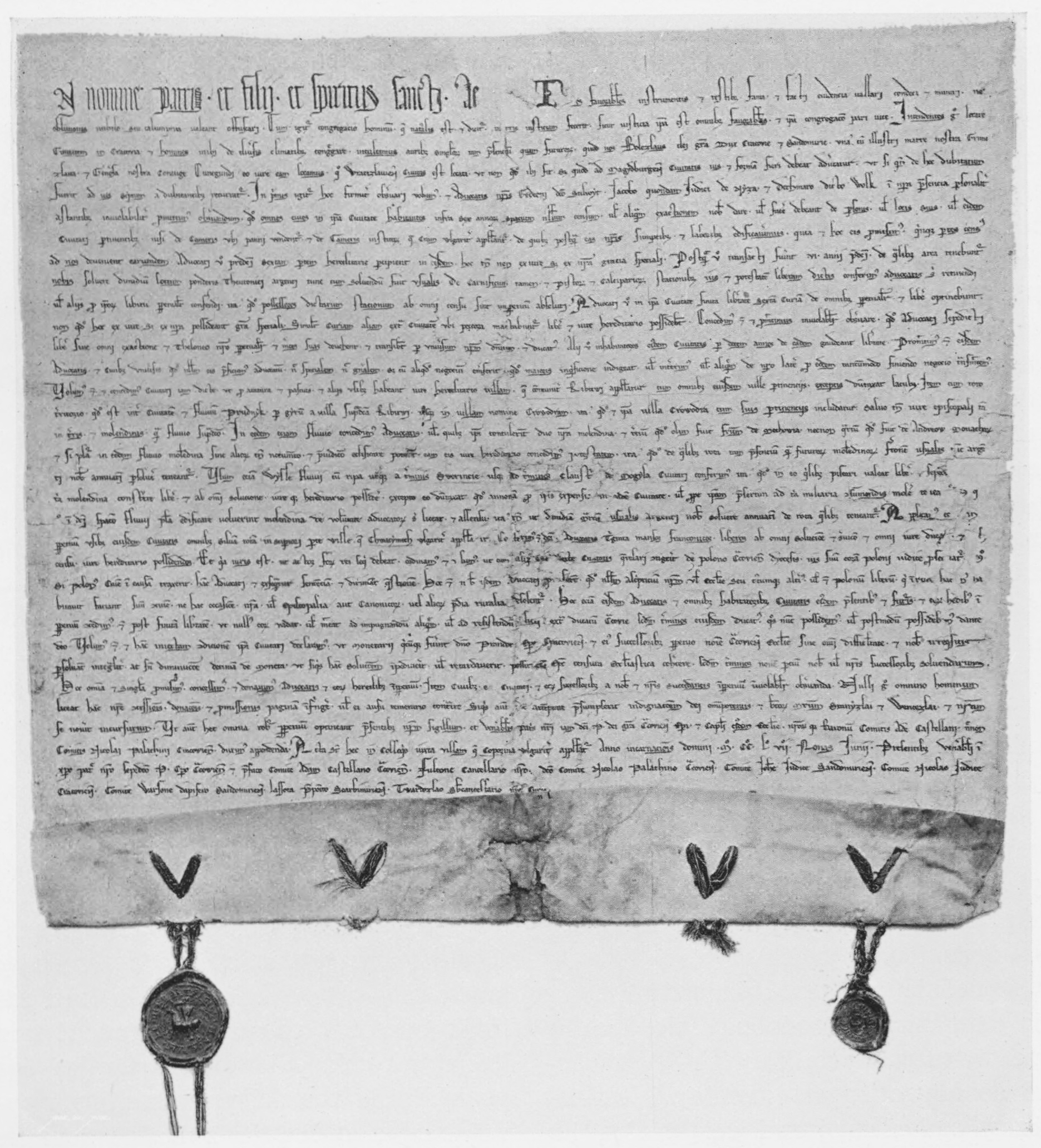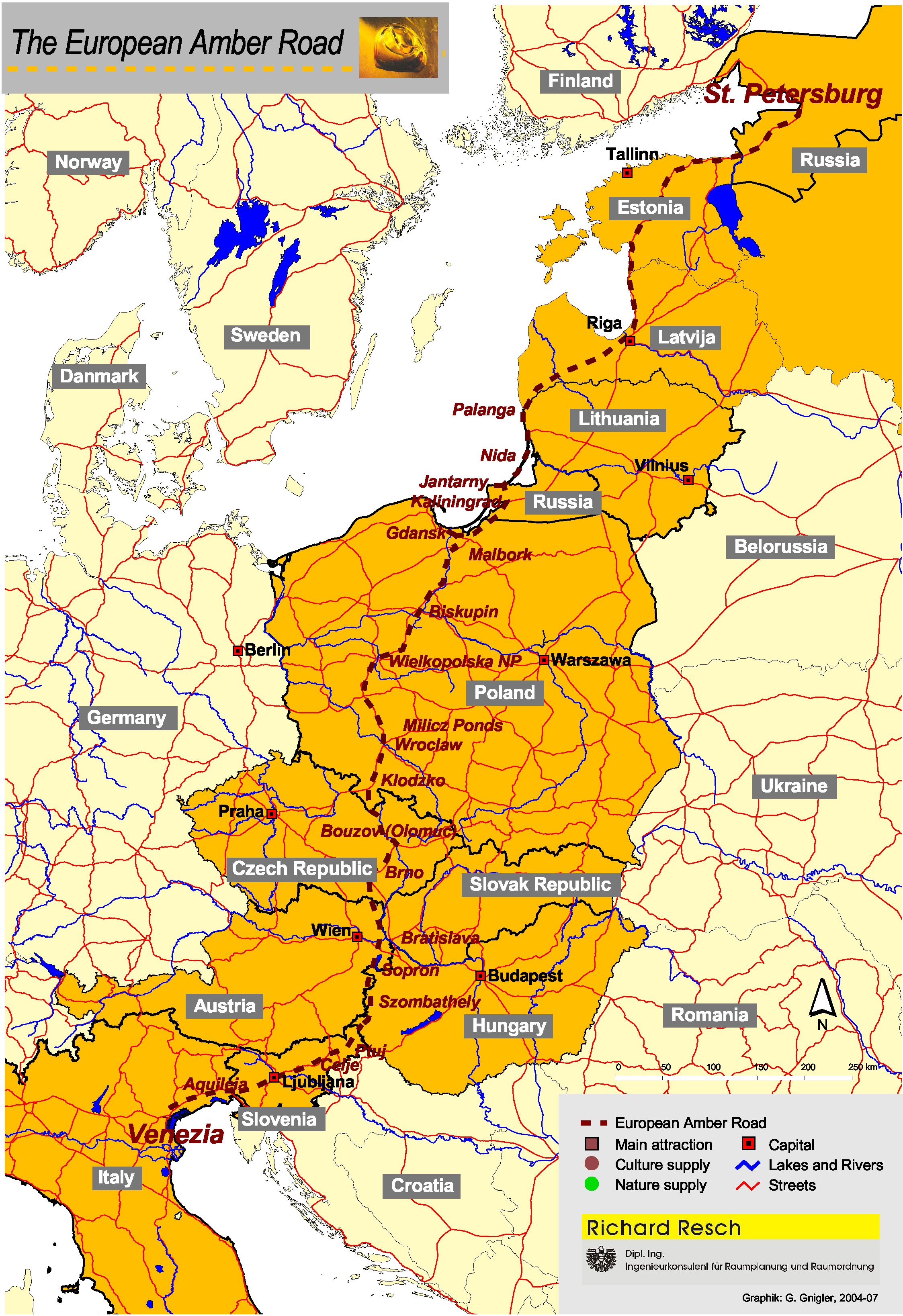|
Sobótka
Sobótka (pronounced , german: Zobten am Berge) is a town in Wrocław County, Lower Silesian Voivodeship, in south-western Poland. It is the seat of the administrative district ( gmina) called Gmina Sobótka. Sobótka is located about southwest of Wrocław on the northern slope of Mount Ślęża, part of the Central Sudetes mountain range. , the town has a population of 6,981. History The area had been settled since prehistoric times, as evidenced by numerous archaeological artefacts, and in the 2nd century BC Mount Ślęża was a religious site of the Celtic Boii tribe, marking a northern outpost of their settlement area. In 1128, the Polish voivode Piotr Włostowic established an Augustinian monastery on Mount Ślęża which was later moved to Wrocław, while the area remained a property of the Augustinian order. The settlement was first mentioned in an 1148 bull issued by Pope Eugene III as ''Sabath'', the name most likely referring to a weekly Saturday ( la, sabbatum, p ... [...More Info...] [...Related Items...] OR: [Wikipedia] [Google] [Baidu] |
Gmina Sobótka
__NOTOC__ Gmina Sobótka is an urban-rural gmina (administrative district) in Wrocław County, Lower Silesian Voivodeship, in south-western Poland. Its seat is the town of Sobótka, which lies approximately south-west of the regional capital Wrocław. It is part of the Wrocław metropolitan area. The gmina covers an area of , and as of 2019 its total population is 12,854. Neighbouring gminas Gmina Sobótka is bordered by the gminas of Jordanów Śląski, Kąty Wrocławskie, Kobierzyce, Łagiewniki, Marcinowice and Mietków. Villages Apart from the town of Sobótka, the gmina contains the villages of Będkowice, Garncarsko, Kryształowice, Księginice Małe, Kunów, Michałowice, Mirosławice, Nasławice, Okulice, Olbrachtowice, Przezdrowice, Ręków, Rogów Sobócki, Siedlakowice, Stary Zamek, Strachów, Strzegomiany, Sulistrowice, Sulistrowiczki, Świątniki, Wojnarowice and Żerzuszyce. Twin towns – sister cities Gmina Sobótka is twinned with: * Berga/Els ... [...More Info...] [...Related Items...] OR: [Wikipedia] [Google] [Baidu] |
Wrocław
Wrocław (; , . german: Breslau, , also known by other names) is a city in southwestern Poland and the largest city in the historical region of Silesia. It lies on the banks of the Oder in the Silesian Lowlands of Central Europe, roughly from the Sudeten Mountains to the south. , the official population of Wrocław is 674,132 making it the third largest city in Poland. The population of the Wrocław metropolitan area is around 1.25 million. Wrocław is the historical capital of Silesia and Lower Silesia. Today, it is the capital of the Lower Silesian Voivodeship. The history of the city dates back over 1,000 years; at various times, it has been part of the Kingdom of Poland, the Kingdom of Bohemia, the Kingdom of Hungary, the Habsburg monarchy of Austria, the Kingdom of Prussia and Germany, until it became again part of Poland in 1945 as the result of territorial changes of Poland immediately after World War II. Wrocław is a university city with a student popula ... [...More Info...] [...Related Items...] OR: [Wikipedia] [Google] [Baidu] |
Wrocław County
__NOTOC__ Wrocław County ( pl, powiat wrocławski) is a unit of territorial administration and local government (powiat) in Lower Silesian Voivodeship, south-western Poland. It came into being on January 1, 1999, as a result of the Polish local government reforms passed in 1998. The county covers an area of . Its administrative seat is the city of Wrocław, although this city is not part of the county (it forms a separate city county). Wrocław County consists of areas to the east and south of Wrocław (city with county rights), and contains three towns: Sobótka, Kąty Wrocławskie and Siechnice. As of 2019 the total population of the county is 148,663, out of which the population of Siechnice is 8,113, that of Kąty Wrocławskie is 6,994, that of Sobótka is 6,981, and the rural population is 126,575. Neighbouring counties Apart from the city of Wrocław Wrocław (; , . german: Breslau, , also known by other names) is a city in southwestern Poland and the largest ci ... [...More Info...] [...Related Items...] OR: [Wikipedia] [Google] [Baidu] |
Lower Silesian Voivodeship
Lower Silesian Voivodeship, or Lower Silesia Province, in southwestern Poland, is one of the 16 voivodeships (provinces) into which Poland is divided. The voivodeship was created on 1 January 1999 out of the former Wrocław, Legnica, Wałbrzych and Jelenia Góra Voivodeships, following the Polish local government reforms adopted in 1998. It covers an area of , and has a total population of 2,899,986. It is one of the richest provinces in Poland as it has valuable natural resources such as copper, silver, gold, brown coal and rock materials (inter alia granite, basalt, gabbro, diabase, amphibolite, porphyry, gneiss, serpentinite, sandstone, greywacke, limestone, dolomite, bentonite, kaolinite, clay, aggregate), which are exploited by the biggest enterprises. Its well developed and varied industries attract both domestic and foreign investors. Its capital and largest city is Wrocław, situated on the Oder River. It is one of Poland's largest and most dynamic ci ... [...More Info...] [...Related Items...] OR: [Wikipedia] [Google] [Baidu] |
Voivodeships Of Poland
A voivodeship (; pl, województwo ; plural: ) is the highest-level administrative division of Poland, corresponding to a province in many other countries. The term has been in use since the 14th century and is commonly translated into English as "province". The administrative divisions of Poland, Polish local government reforms adopted in 1998, which went into effect on 1 January 1999, created sixteen new voivodeships. These replaced the 49 subdivisions of the Polish People's Republic, former voivodeships that had existed from 1 July 1975, and bear a greater resemblance (in territory, but not in name) to the voivodeships that existed between 1950 and 1975. Today's voivodeships are mostly named after historical and geographical regions, while those prior to 1998 generally took their names from the cities on which they were centered. The new units range in area from under (Opole Voivodeship) to over (Masovian Voivodeship), and in population from nearly one million (Opole Voivodes ... [...More Info...] [...Related Items...] OR: [Wikipedia] [Google] [Baidu] |
Bolesław I The Tall
Bolesław I the Tall ( pl, Bolesław I Wysoki) (born 1127 – died Leśnica (now part of Wrocław), 7 or 8 December 1201) was Duke of Wroclaw from 1163 until his death in 1201. Early years He was the eldest son of Władysław II the Exile by his wife Agnes of Babenberg, daughter of Margrave Leopold III of Austria and half-sister of King Conrad III of Germany. Bolesław spent his childhood in the court of his grandfather and namesake, Bolesław III Wrymouth, in Płock. It was not until 1138, after the death of Bolesław III, that he moved with his parents to Kraków, which became the capital of the Seniorate Province, ruled by his father as high duke and overlord of Poland. The reign of Władysław II was short and extremely stormy. The conflicts began when the high duke tried to remove his half-brothers, the junior dukes, from their districts. According to the chronicler Wincenty Kadłubek, the confrontation between the siblings was mainly instigated by Władysław II's wife ... [...More Info...] [...Related Items...] OR: [Wikipedia] [Google] [Baidu] |
Henry I The Bearded
Henry the Bearded ( pl, Henryk (Jędrzych) Brodaty, german: Heinrich der Bärtige; c. 1165/70 – 19 March 1238) was a Polish duke from the Piast dynasty. He was Duke of Silesia at Wrocław from 1201, Duke of Kraków and High Duke of all Poland – internally divided – from 1232 until his death. Life Early career and the loss of Opole Henry was the fourth son of Duke Bolesław I the Tall of Silesia, by his second wife Christina, probably a German. He was born in Głogów (''Glogau''), Lower Silesia. Henry's three older brothers Boleslaw, Conrad and John (1174-1190) died. His older half-brother Jarosław of Opole became a priest, possibly because of the scheming of Henry's mother Christina. Henry became Bolesław's sole heir in 1190. Through his marriage with Hedwig of Andechs (1182–1189), Henry was connected to the rulers of Germany, Hungary, Bohemia, and France. Henry's father, Bolesław I, died 8 December 1201. Early in 1202 Henry's uncle, Duke Mieszko IV Tanglef ... [...More Info...] [...Related Items...] OR: [Wikipedia] [Google] [Baidu] |
Magdeburg Rights
Magdeburg rights (german: Magdeburger Recht; also called Magdeburg Law) were a set of town privileges first developed by Otto I, Holy Roman Emperor (936–973) and based on the Flemish Law, which regulated the degree of internal autonomy within cities and villages granted by the local ruler. Named after the German city of Magdeburg, these town charters were perhaps the most important set of medieval laws in Central Europe. They became the basis for the German town laws developed during many centuries in the Holy Roman Empire. The Magdeburg rights were adopted and adapted by numerous monarchs, including the rulers of Bohemia, Hungary, Poland and Lithuania, a milestone in the urbanization of the region which prompted the development of thousands of villages and cities. Provisions Being a member of the Hanseatic League, Magdeburg was one of the most important trade cities, maintaining commerce with the Low Countries, the Baltic states, and the interior (for example Braunschwei ... [...More Info...] [...Related Items...] OR: [Wikipedia] [Google] [Baidu] |
Amber Road
The Amber Road was an ancient trade route for the transfer of amber from coastal areas of the North Sea and the Baltic Sea to the Mediterranean Sea. Prehistoric trade routes between Northern and Southern Europe were defined by the amber trade. As an important commodity, sometimes dubbed "the gold of the north", amber was transported from the North Sea and Baltic Sea coasts overland by way of the Vistula and Dnieper rivers to Italy, Greece, the Black Sea, Syria and Egypt over a period of thousands of years. Antiquity The oldest trade in amber started from Sicily. The Sicilian amber trade was directed to Greece, North Africa and Spain. Sicilian amber was also discovered in Mycenae by the archaeologist Heinrich Schliemann, and it appeared in sites in southern Spain and Portugal. Its distribution is similar to that of ivory, so it is possible that amber from Sicily reached the Iberian Peninsula through contacts with North Africa. After a decline in the consumption and trade of amb ... [...More Info...] [...Related Items...] OR: [Wikipedia] [Google] [Baidu] |
Casimir III The Great
Casimir III the Great ( pl, Kazimierz III Wielki; 30 April 1310 – 5 November 1370) reigned as the King of Poland from 1333 to 1370. He also later became King of Ruthenia in 1340, and fought to retain the title in the Galicia-Volhynia Wars. He was the last Polish king from the Piast dynasty. Casimir inherited a kingdom weakened by war and made it prosperous and wealthy. He reformed the Polish army and doubled the size of the kingdom. He reformed the judicial system and introduced a legal code, gaining the title "the Polish Justinian". Casimir built extensively and founded the Jagiellonian University (back then simply called the University of Krakow),Saxton, 1851, p. 535 the oldest Polish university and one of the oldest in the world. He also confirmed privileges and protections previously granted to Jews and encouraged them to settle in Poland in great numbers. Casimir left no sons. When he died in 1370 from an injury received while hunting, his nephew, King Louis I of Hunga ... [...More Info...] [...Related Items...] OR: [Wikipedia] [Google] [Baidu] |
Kingdom Of Bohemia
The Kingdom of Bohemia ( cs, České království),; la, link=no, Regnum Bohemiae sometimes in English literature referred to as the Czech Kingdom, was a medieval and early modern monarchy in Central Europe, the predecessor of the modern Czech Republic. It was an Imperial State in the Holy Roman Empire, and the Bohemian king was a prince-elector of the empire. The kings of Bohemia, besides the region of Bohemia proper itself, also ruled other lands belonging to the Bohemian Crown, which at various times included Moravia, Silesia, Lusatia, and parts of Saxony, Brandenburg, and Bavaria. The kingdom was established by the Přemyslid dynasty in the 12th century from the Duchy of Bohemia, later ruled by the House of Luxembourg, the Jagiellonian dynasty, and from 1526 the House of Habsburg and its successor, the House of Habsburg-Lorraine. Numerous kings of Bohemia were also elected Holy Roman Emperors, and the capital, Prague, was the imperial seat in the late 14th cent ... [...More Info...] [...Related Items...] OR: [Wikipedia] [Google] [Baidu] |
Duchy Of Świdnica
A duchy, also called a dukedom, is a medieval country, territory, fief, or domain ruled by a duke or duchess, a ruler hierarchically second to the king or queen in Western European tradition. There once existed an important difference between "sovereign dukes" and dukes who were ordinary noblemen throughout Europe. Some historic duchies were sovereign in areas that would become part of nation-states only during the modern era, such as happened in Germany (once a federal empire) and Italy (previously a unified kingdom). In contrast, others were subordinate districts of those kingdoms that had unified either partially or completely during the medieval era, such as France, Spain, Sicily, Naples, and the Papal States. Examples In France, several duchies existed in the medieval period, including Normandy, Burgundy, Brittany, and Aquitaine. The medieval German stem duchies (german: Stammesherzogtum, literally "tribal duchy," the official title of its ruler being ''Herzog'' or "duke ... [...More Info...] [...Related Items...] OR: [Wikipedia] [Google] [Baidu] |







_Tafel_03.png)
